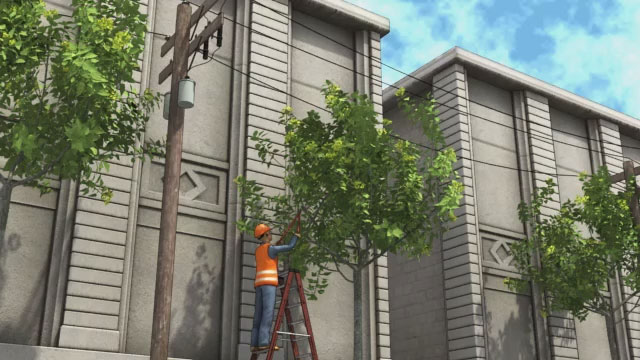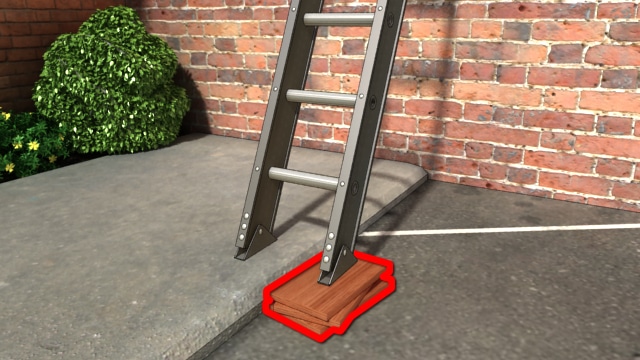




Ladder Safety Training
Ladders are tools commonly used to gain access to higher levels that are otherwise unreachable. When maintained properly and used according to ladder safety guidelines, ladders are a simple and effective tool. However, thousands of workers are either injured or killed in ladder-related accidents every year. This course describes different types of ladders, ladder construction, ladder selection, height requirements, weight capacity, hazardous conditions, inspections, ladder setup, safe practices when using ladders, storage, and maintenance.
Request a demoCourse Details
Learning Objectives
- State the general construction of ladders
- Differentiate between the different types of ladders
- Select a ladder appropriate for accessing a work area
- Set up a correct ladder height and pitch in accordance with ladder safety training protocols
- Identify equipment damage and proper ladder functionality
- Define proper ladder storage and maintenance
- Identify safe ladder setup locations on a worksite
Specs
| Course Level | Intermediate |
| Languages | English, Spanish, Chinese, French |
| Compatibility | Audio, Video |
| Based on: | 29 CFR 1910 Subpart D: Walking-Working Surfaces |
Key Questions
Ladder safety training prevents accidents by teaching proper setup, inspection, and usage techniques, ensuring individuals understand and follow safe practices to minimize risks effectively. It also enhances awareness of potential hazards and emergency procedures, promoting a safer work environment overall.
What are the different parts of a typical ladder?Ladders typically consist of two side rails and that are joined at regular intervals by crosspieces called steps or rungs. In general, ladders have very few working parts. However, extension ladders usually have pulleys, ropes, and ladder locks. In some cases, ladders may be equipped with roof hooks or adjustable feet to provide added stabilization.
What is a step ladder?Step ladders are self-supporting portable ladders that are not adjustable in length. They are commonly used in areas where items need to be reached, but where there is no accessible structure to provide ladder support.
What is a straight ladder?Straight ladders are portable ladders that are not self-supporting. They’re made of a single section that is not adjustable in length and are used to reach items on a structure that is providing the support for the ladder.
What is an extension ladder?Extension ladders are also not self-supporting ladders. They consist of two or more sections traveling in guides to allow height adjustment. The sections can be adjusted with pulleys, halyards, and ladder locks. Extension ladders are used like straight ladders, but allow for greater heights to be reached.
What is a fixed ladder?Fixed ladders are straight ladders that are permanently fixed to a building structure or piece of equipment. These ladders may have additional structures attached, including rest platforms, cages, or wells.
Sample Video Transcript
When selecting a ladder, thoroughly inspect your job site for hazards, like exposed electrical equipment or power lines. If any electrical hazards exist in the working area, choose a non-conductive ladder, being a wood or reinforced plastic ladder. Maintain at least ten feet of clearance from the hazard at all times. If you suspect that a structure may not be stable enough to support a leaning straight ladder, then choose a self-supporting step ladder instead. Also, never use a step ladder as a straight ladder by leaning it against a supporting structure. Step ladders are not designed to function in this manner.
Additional Resources
- U.S. Department of Labor’s Occupational Safety & Health Administration (OSHA) – www.osha.gov
- OSHA Safety & Health Topics – https://www.osha.gov/SLTC/walkingworkingsurfaces/index.html
- OSHA Guidelines – https://www.osha.gov/pls/oshaweb/owadisp.show_document?p_table=FEDERAL_REGISTER&p_id=23579
- National Institute for Occupational Safety and Health (NIOSH) – www.cdc.gov/niosh/
- NIOSH Workplace Safety & Health Topics- www.cdc.gov/niosh/topics/falls/
- American Ladder Institute – www.americanladderinstitute.org
Course Applies To
Demos + Pricing
Learn more about our courses, get pricing, and see our platform.











